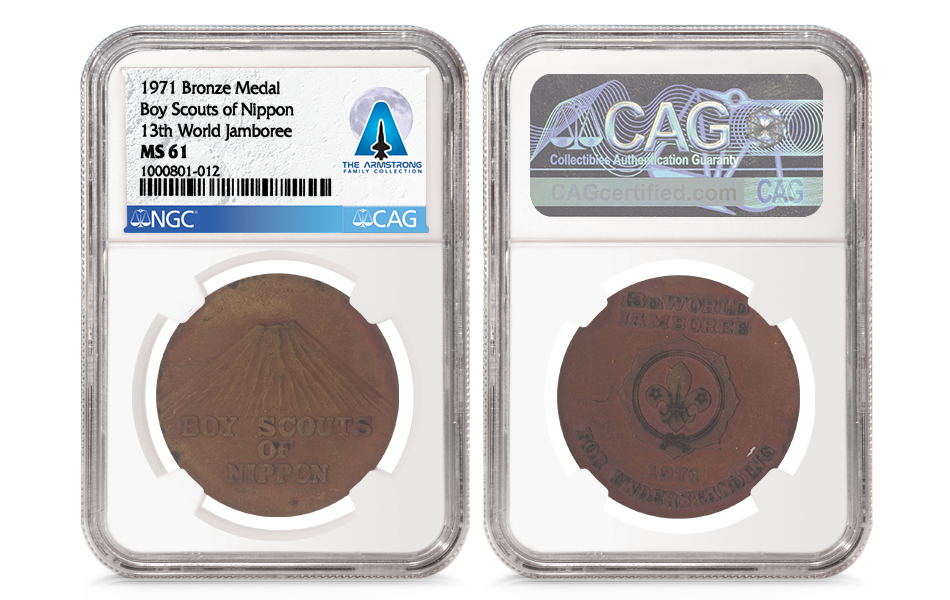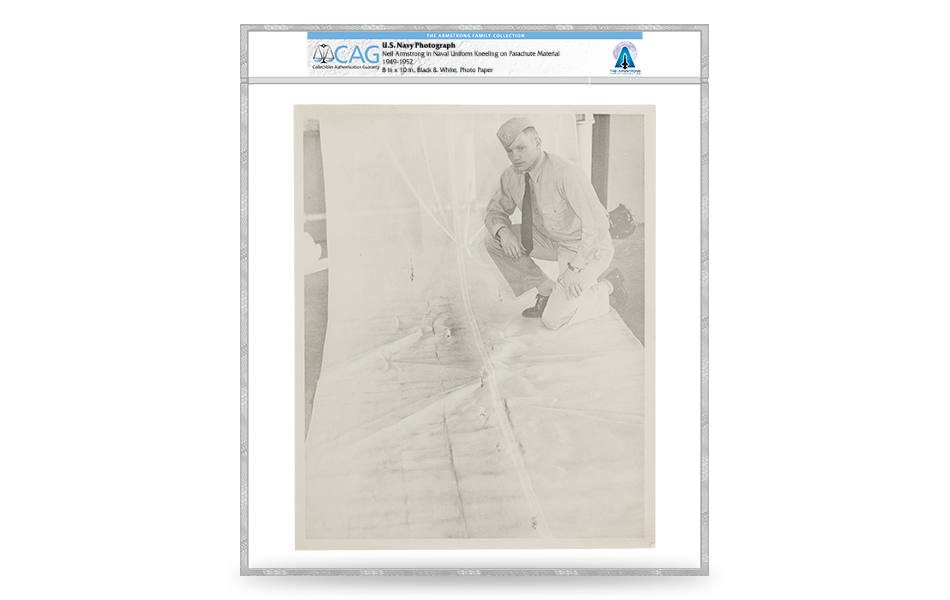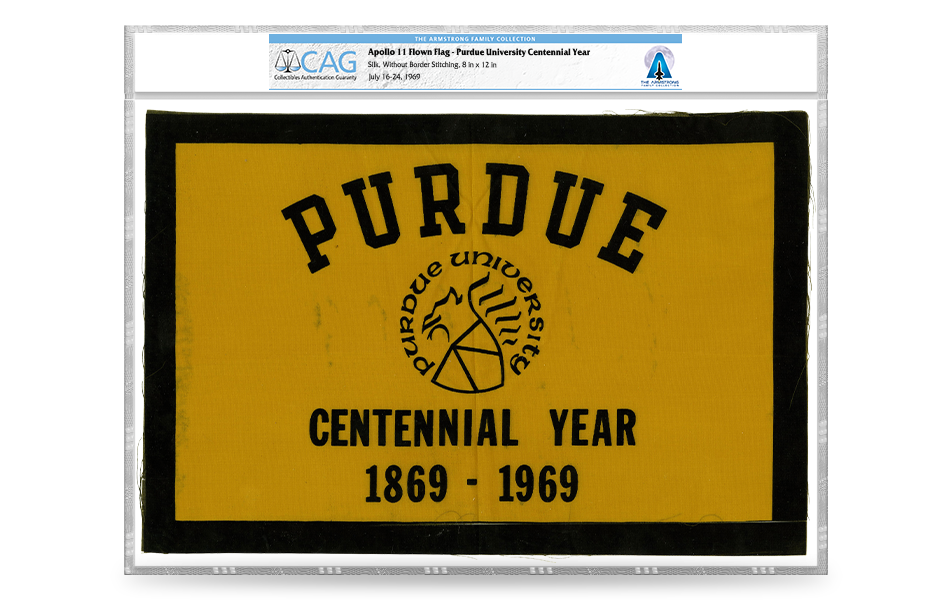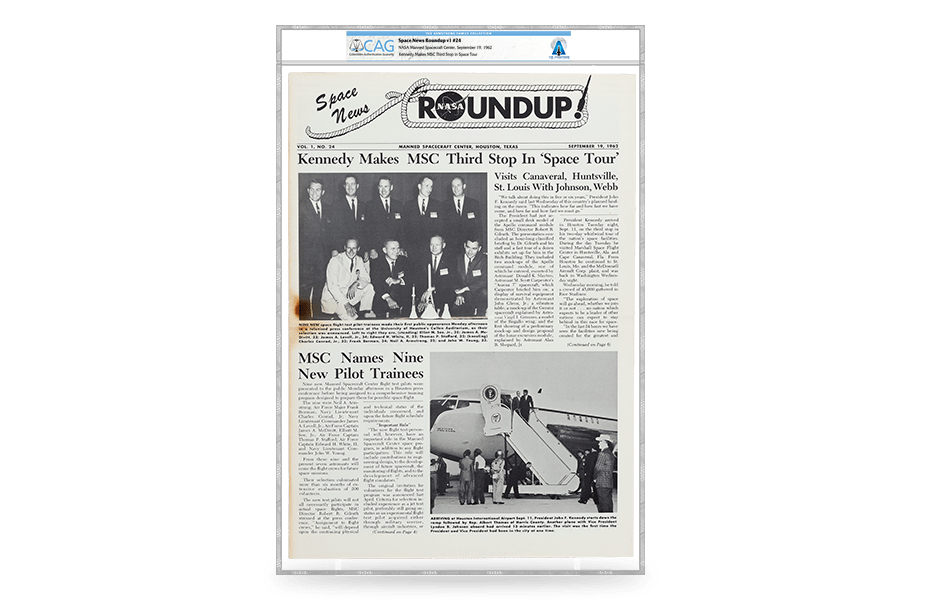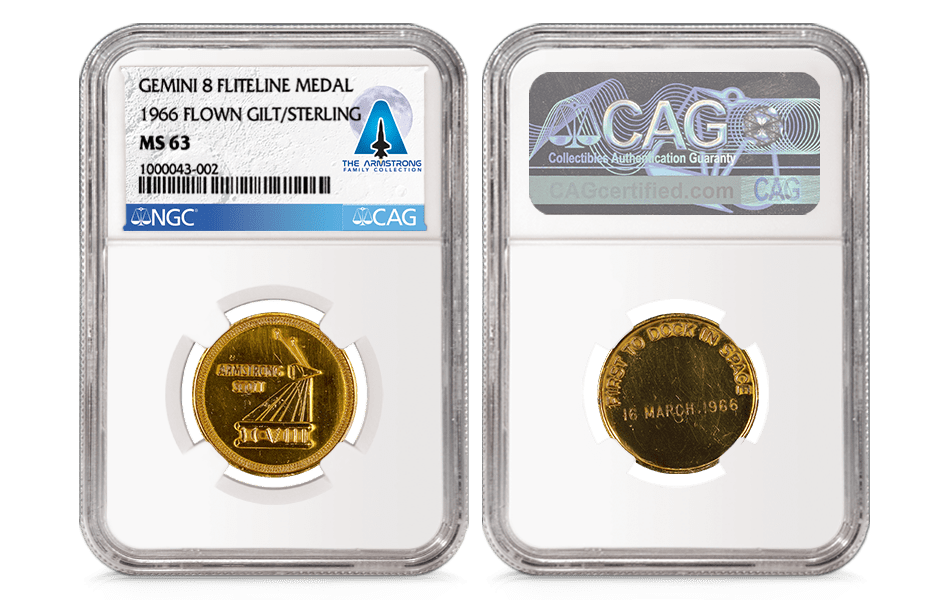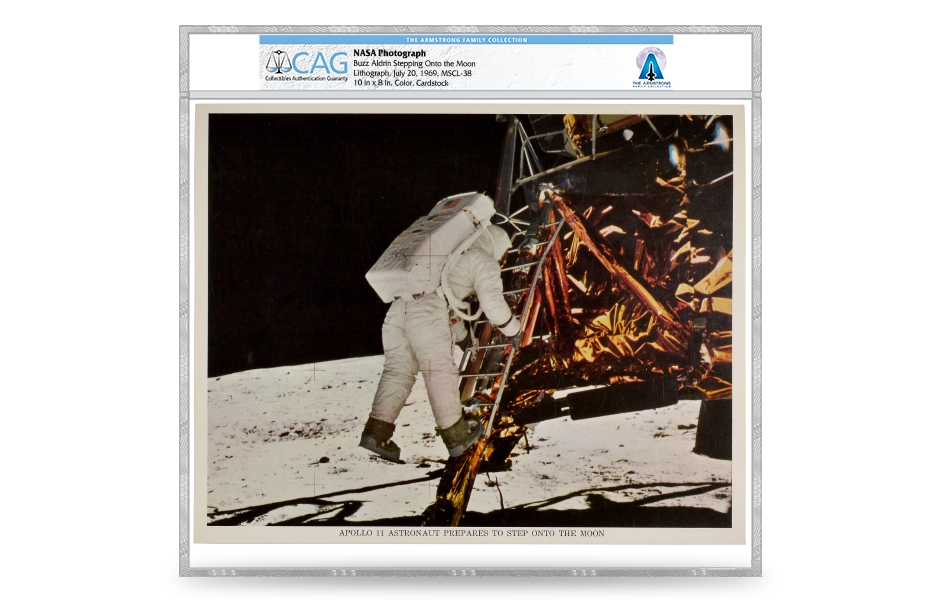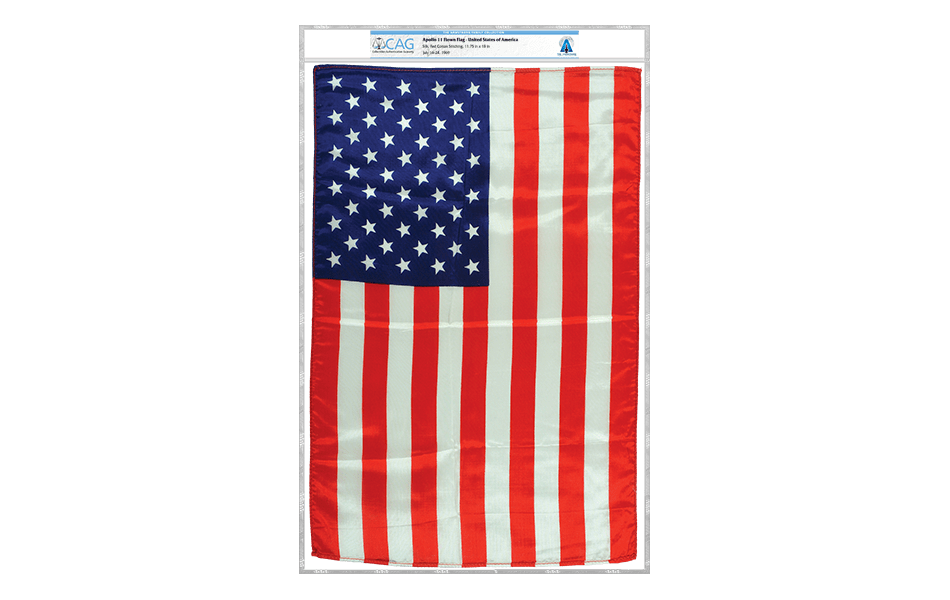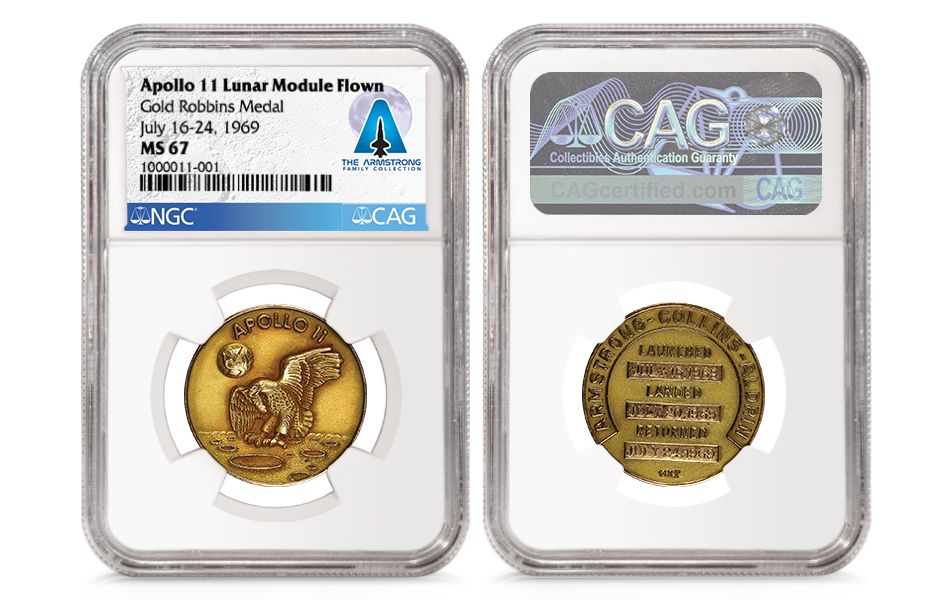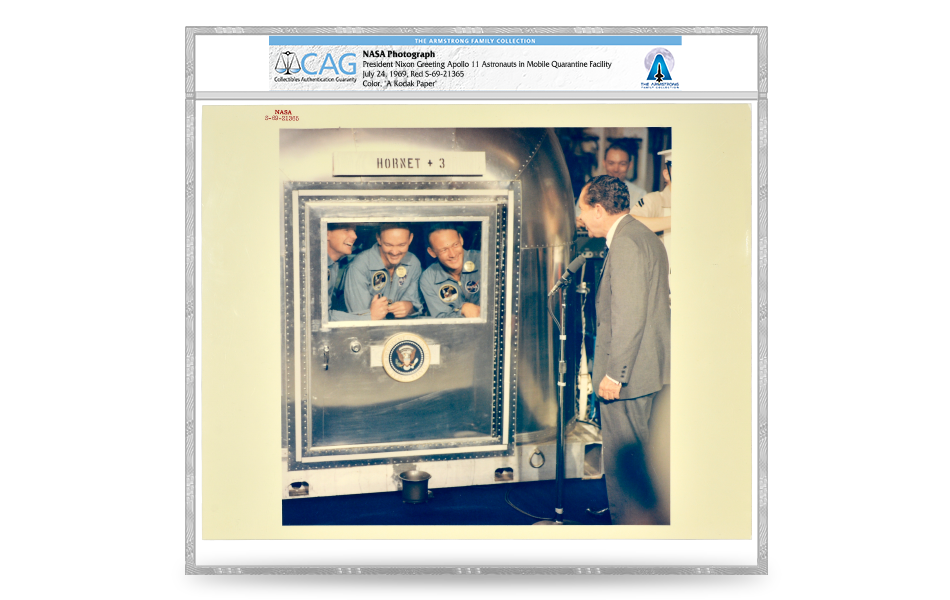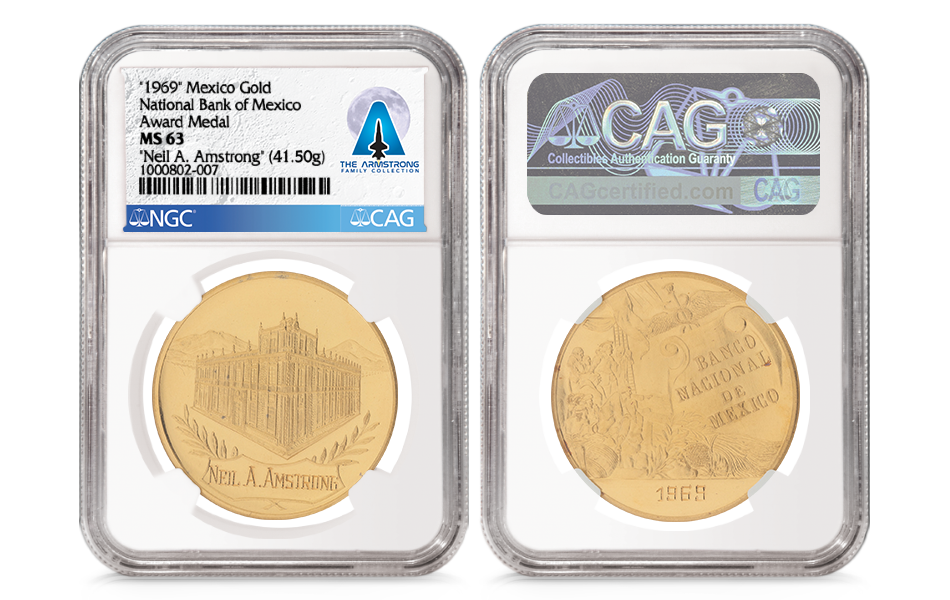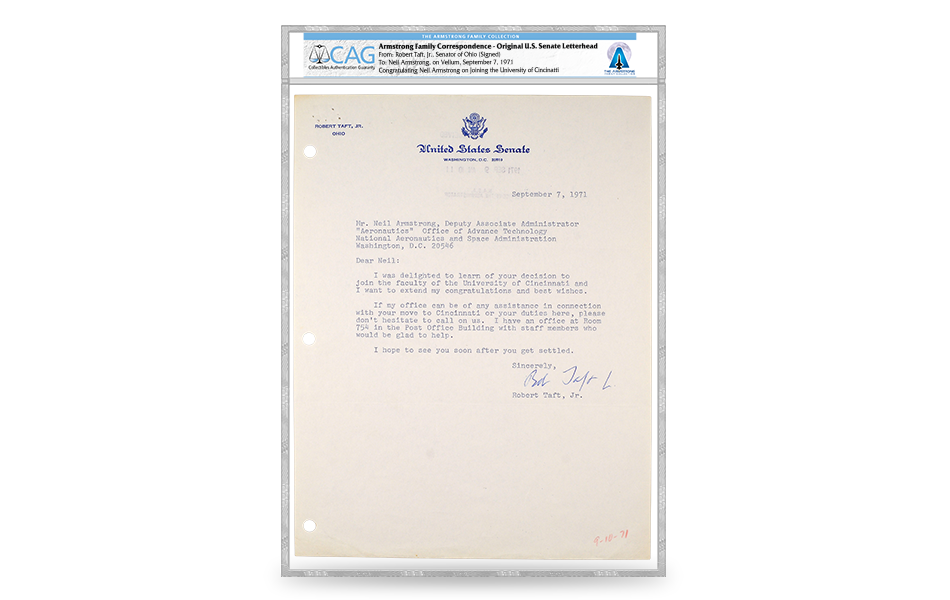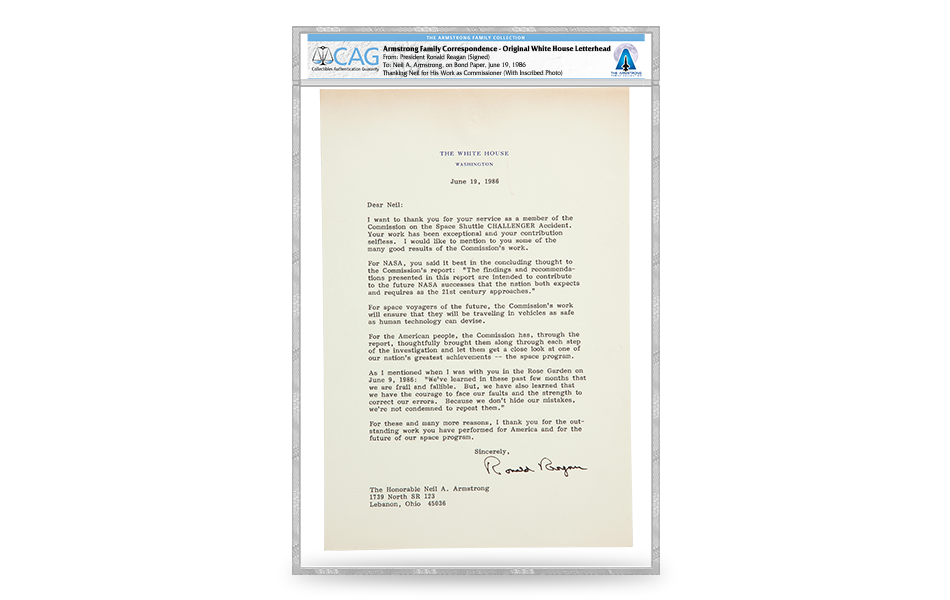Neil Armstrong
Learn about the life and accomplishments of Neil Armstrong—the first man to walk on the moon—through the CAG-certified artifacts from the Armstrong Family Collection™. CAG was selected to certify the entire collection of thousands of items from Armstrong and his immediate family members. View the collection in the CAG Artifact Registry >
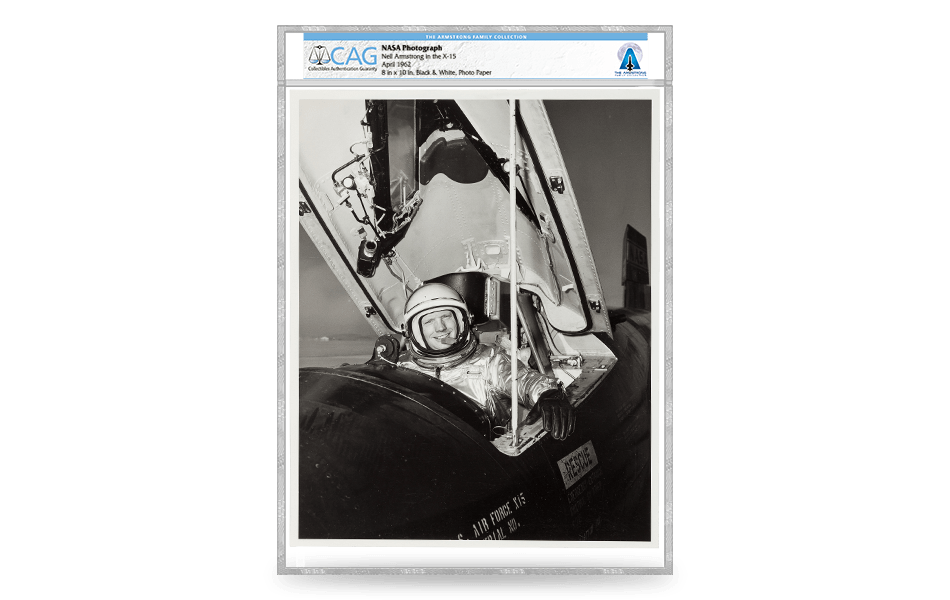
Test Pilot/Gemini Program
1960-1962
Armstrong’s career as test pilot culminates with his work with the North American X-15, a rocket-powered aircraft that traveled many times the speed of sound. He performed seven test flights, achieving a maximum speed of 3,989 mph during one and an altitude of 63 kilometers on another.
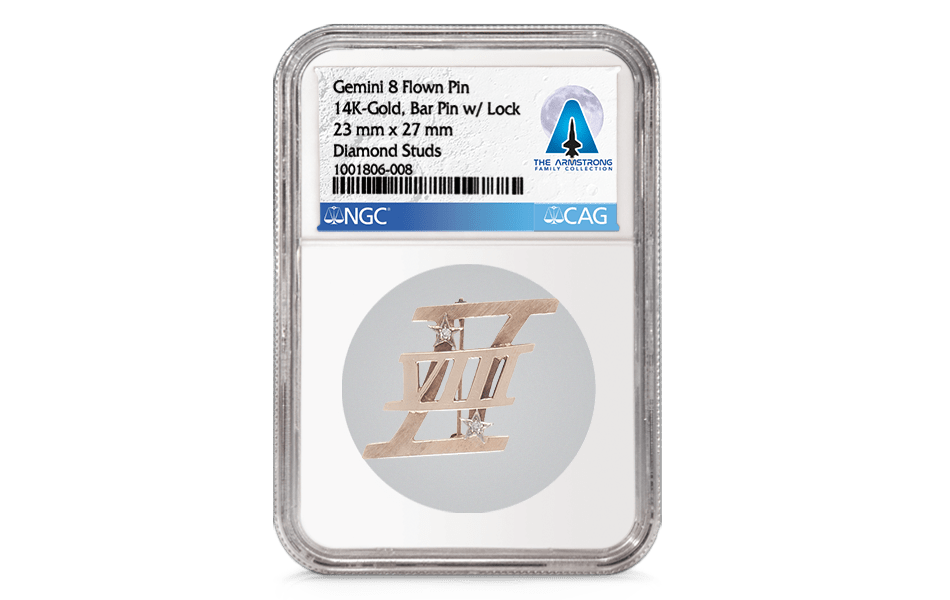
Test Pilot/Gemini Program
March 16-17, 1966
Gemini 8 nearly turns into a disaster and the mission is cut short early after the spacecraft started tumbling out of control. Before Armstrong expertly regained control, NASA had turned off the squawk box at his home, alarming his wife. Armstrong took this pin with him on the mission and later gave it to his wife.
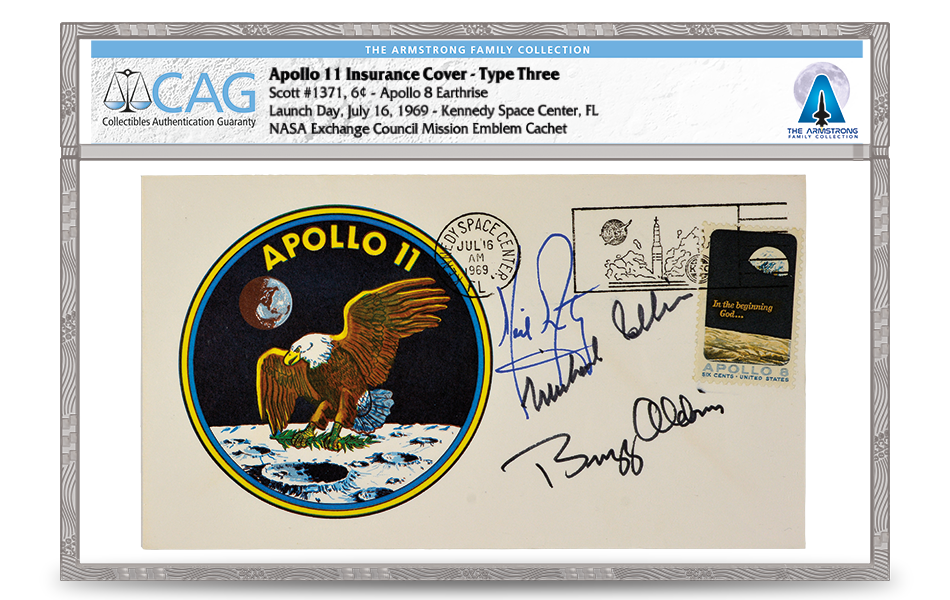
Apollo 11
January 9, 1969
NASA announces the crew for the Apollo 11 mission: Armstrong as Mission Commander, Buzz Aldrin as Lunar Module Pilot and Michael Collins as Command Module Pilot. Armstrong, Aldrin and Collins signed hundreds of postal covers like these before the mission as a sort of life insurance for their families, in case they did not make it back.
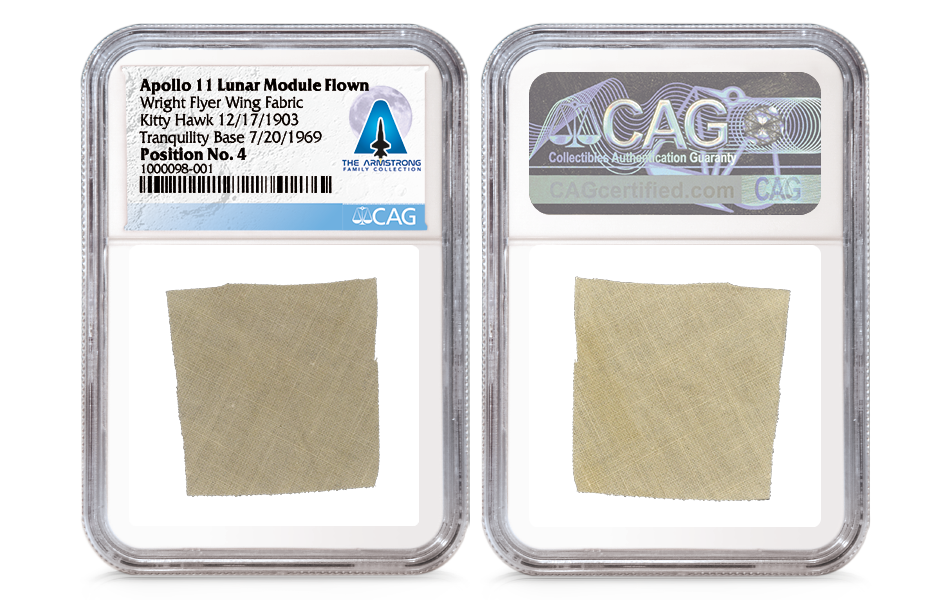
Apollo 11
July 16, 1969
The Apollo 11 moon mission blasts off from Kennedy Space Center. On board are pieces from the Wright Flyer, the aircraft flown by the Wright Brothers near Kitty Hawk, North Carolina. The four brief flights on December 17, 1903 by the powered, heavier-than-air machine had touched off a new era in manned aviation.
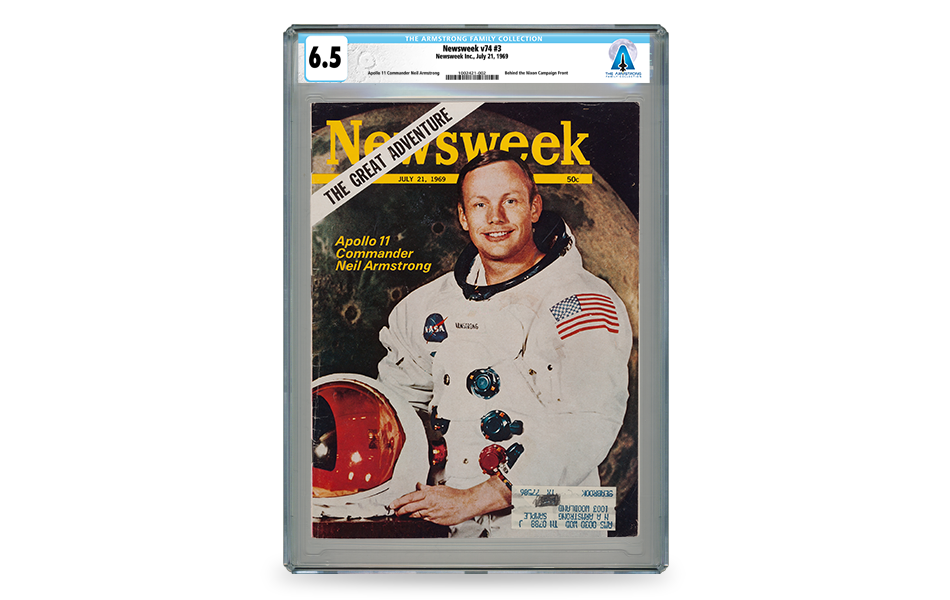
After Apollo 11
Aug. 25, 2012
Neil Armstrong passes away at age 82. NASA Administrator Charles Bolden praised Armstrong, saying, “As long as there are history books, Neil Armstrong will be included in them.” Armstrong’s incredible life is recounted in “First Man,” a 2005 biography and a 2018 movie of the same name.
CAG was selected to certify the entire Armstrong Family Collection. View the collection in the CAG Artifact Registry >

